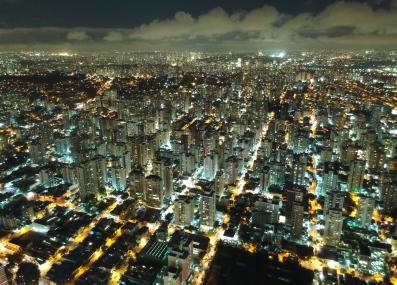Have a question?
Why aren't we looking at more hydropower?
Hydropower is already a major source of power globally—indeed, it’s the largest source of renewable electricity—but there are limited places to build hydropower, and large dams carry a number of social and environmental concerns.
Updated August 8, 2025
While wind and solar often dominate conversations about low-carbon electricity, hydropower provides more electricity worldwide than any other low-carbon energy source: over twice as much as solar power and 1.5 times more than nuclear.1 And while the world's hydroelectric output has stalled in recent years, that has been a result of drought (likely made worse by climate change)—not a lack of investment in new dams.2
"If you look at some of the most dramatic proposals for a pathway to zero carbon electricity system, they all need to incorporate a significant build out of hydropower," says John Parsons, an energy economist with MIT's Center for Energy and Environmental Policy Research.
However, large hydroelectric dams can’t be built just anywhere. Hydro plants need a consistent supply of water and a large amount of land. Some countries have plenty of these resources; others do not.
Poorly planned hydropower can also cause more problems for the climate than it prevents. Hydro plants need large reservoirs to provide a steady stream of water. When these reservoirs are built, plants and other organic matter get flooded. This material decays over time, releasing greenhouse gases like carbon dioxide and methane. According to Parsons, there hasn't been much research measuring these emissions, but the studies that have been done have found huge differences from reservoir to reservoir.
"People are right to think of hydro as a low-carbon resource, but the variability is very high and there are some reservoirs that have lifecycle emissions of greenhouse gases that are higher per unit of electricity produced than a fossil plant," he says. "You don't want to just be advocating hydro everywhere."
Many wealthy countries, including the U.S., have already built out most of their suitable hydro resources. The countries adding large amounts of hydro are mainly growing economies in Asia and Africa. Places like China and India have large planned hydro projects that will come online in the next few years, but rather than replace fossil fuel resources, these dams will be used to expand electricity access to areas that don't have it. These enormous projects generate large amounts of electricity and cost billions of dollars.
"Hydro resources often require a very long-term investment horizon," Parsons says. "When you invest in building out a hydro reservoir, it's usually as a part of a very big economic development strategy over a couple of decades."
Hydropower can also cause environmental and social problems. Reservoirs drastically change the landscape and rivers they are built on. Dams and reservoirs can reduce river flows, raise water temperature, degrade water quality and cause sediment to build up. This has negative impacts on fish, birds and other wildlife.
These environmental impacts often spill over to humans as well. The World Bank estimated in 2000 that between 40 and 80 million people had been directly displaced by dams and reservoirs.3 Another study from 2010 estimated that 472 million people downstream from large dams suffer from reduced food security, regular flooding or impacts on their livelihood.4
So while hydropower is a good source of low-carbon electricity, even countries with plenty of untapped water need to weigh the benefits of hydro against the environmental and social costs of dam projects. There’s still room for hydro to grow, but most countries will not build out as much hydropower as they theoretically could—and that may be for the best.
Submit your own question to Ask MIT Climate
Get the latest from Ask MIT Climate monthly in your inbox
1 Ember: Yearly electricity data. Accessed August 8, 2025.
2 International Energy Agency: Hydroelectricity. Updated February 18, 2025.
3 World Commission on Dams: Dams and Development: A New Framework for Decision-Making. November 2000.
4 "Lost in Development's Shadow: The Downstream Human Consequences of Dams." Richter, Brian D. et al. Water Alternatives 3(2), 2010.









